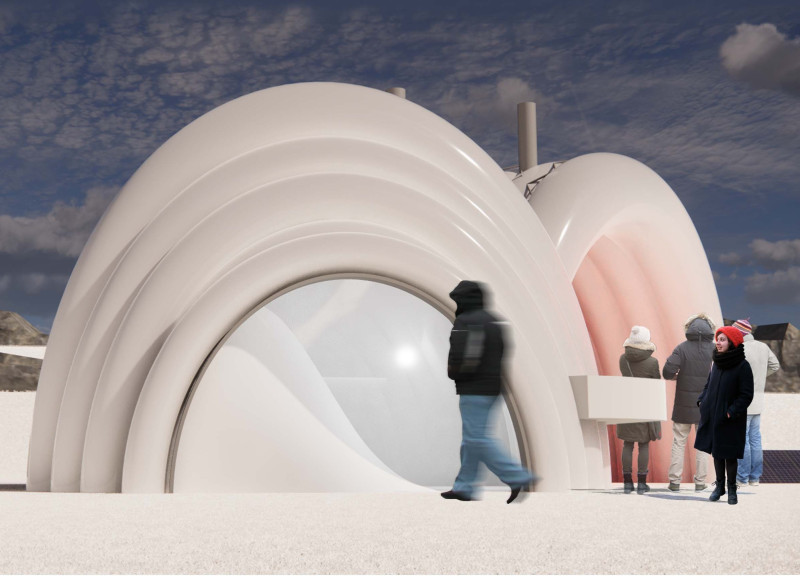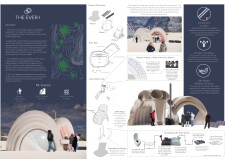5 key facts about this project
The Ever-I stands as a response to the environmental challenges faced at Mt. Everest base camp, targeting waste management and site contamination. This inflatable, semi-rigid design is crafted to address issues of human waste in a high-altitude context. The structure is a practical solution for trekkers and climbers, enhancing their overall experience while promoting a cleaner environment.
Design Concept
The design centers on an innovative bio-gas composite toilet system. This approach provides a means of managing human waste effectively while allowing for the recycling of biogas for use in stoves. The intention is to reduce reliance on traditional methods such as Yak burning, which poses health risks and contributes to local pollution. With a layout that encourages multifunctional use, the Ever-I creates communal spaces within a compact structure.
Materiality and Structure
The primary material used is ETFE, or ethylene tetrafluoroethylene, known for being lightweight and durable. This choice allows for easy transportation and assembly in remote locations, essential for an area with limited access. ETFE offers resilience against harsh weather conditions, making it well-suited for the Everest environment. Its ability to be recycled after use aligns with sustainable practices that are increasingly important in today's world.
Insulation and Functionality
Double wall insulation is a crucial feature of the Ever-I, forming a barrier between the outside environment and the interior. This insulation improves thermal efficiency and helps conserve energy, ensuring a comfortable environment for users. A radiant heating system manages snow accumulation on the roof, utilizing generated heat to prevent excess build-up. Additionally, a water catchment system collects melted snow for flushing and washing, further enhancing functionality.
Adaptive Foundation Design
The design includes a flexible foundation that does not rely on traditional support structures. This allows the Ever-I to remain stable while adapting to the shifting ground conditions typical in mountainous areas. Such adaptability increases the structure's suitability for high-altitude environments. The organic shape of the building reflects the natural landscape, promoting visual harmony while serving practical needs.
Each of these design elements contributes to creating a facility that meets the basic needs of users while considering environmental impacts. The Ever-I offers a thoughtful approach to sustainable infrastructure in a region where clean facilities are necessary for both the health of visitors and the preservation of the surrounding ecosystem.



















































